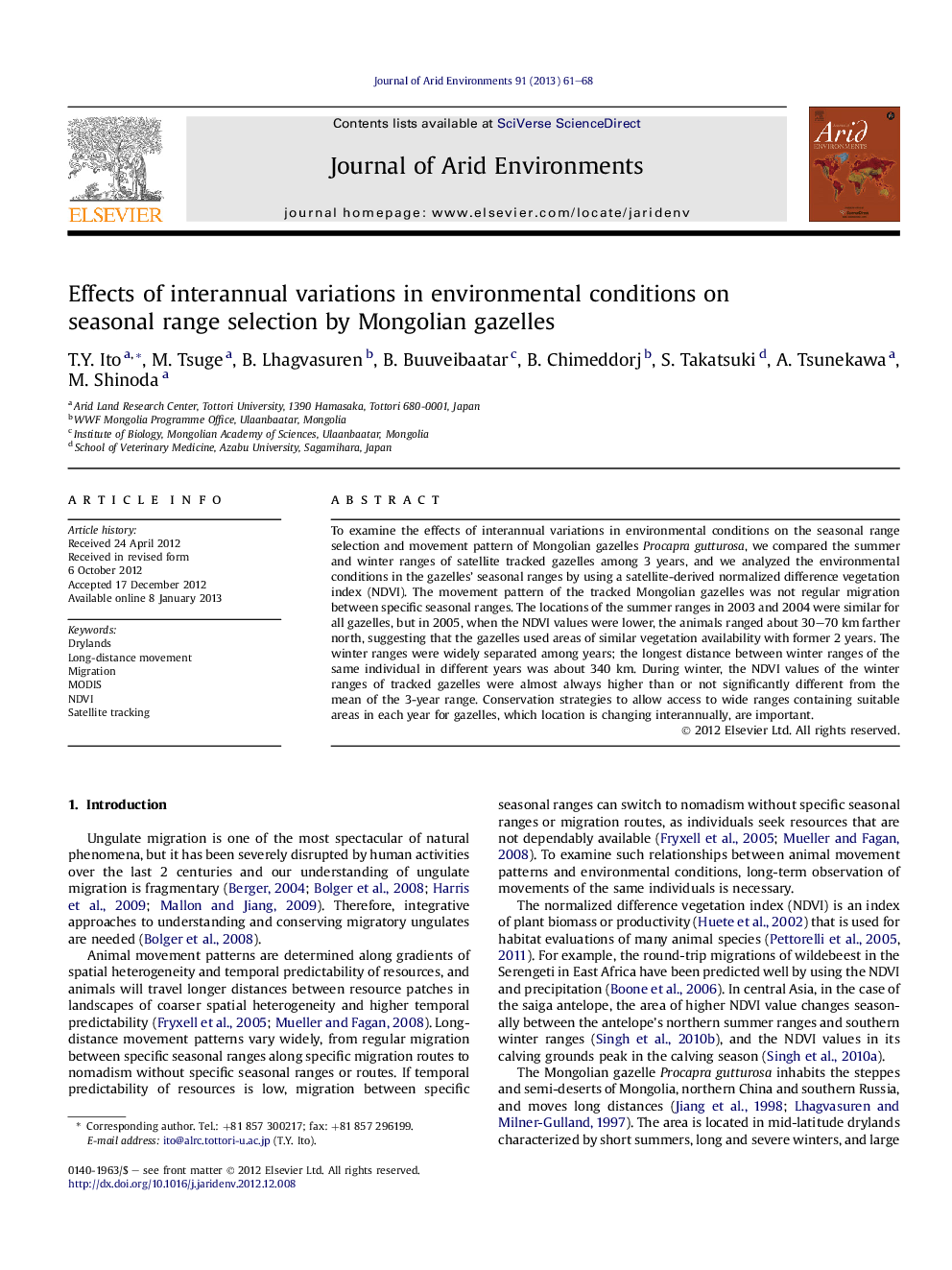| Article ID | Journal | Published Year | Pages | File Type |
|---|---|---|---|---|
| 4393204 | Journal of Arid Environments | 2013 | 8 Pages |
To examine the effects of interannual variations in environmental conditions on the seasonal range selection and movement pattern of Mongolian gazelles Procapra gutturosa, we compared the summer and winter ranges of satellite tracked gazelles among 3 years, and we analyzed the environmental conditions in the gazelles' seasonal ranges by using a satellite-derived normalized difference vegetation index (NDVI). The movement pattern of the tracked Mongolian gazelles was not regular migration between specific seasonal ranges. The locations of the summer ranges in 2003 and 2004 were similar for all gazelles, but in 2005, when the NDVI values were lower, the animals ranged about 30–70 km farther north, suggesting that the gazelles used areas of similar vegetation availability with former 2 years. The winter ranges were widely separated among years; the longest distance between winter ranges of the same individual in different years was about 340 km. During winter, the NDVI values of the winter ranges of tracked gazelles were almost always higher than or not significantly different from the mean of the 3-year range. Conservation strategies to allow access to wide ranges containing suitable areas in each year for gazelles, which location is changing interannually, are important.
► Seasonal ranges of Mongolian gazelles were different interannually. ► Winter ranges of the same gazelle were separated more than 300 km. ► Interannual variation of vegetation conditions affected gazelles' range selection. ► Droughts and severe winter conditions would have impacts on the gazelle population.
